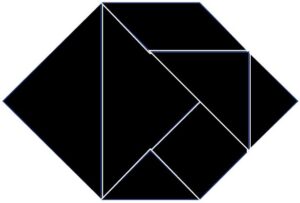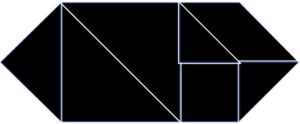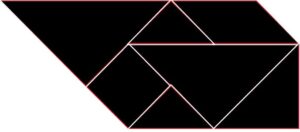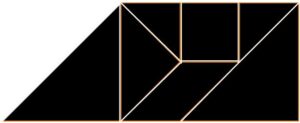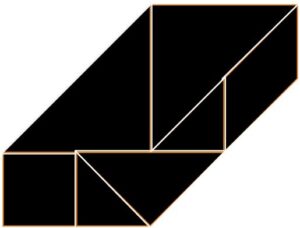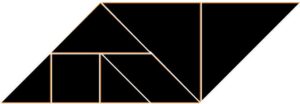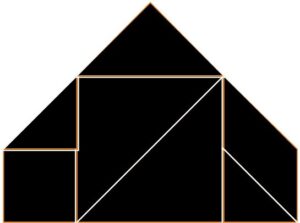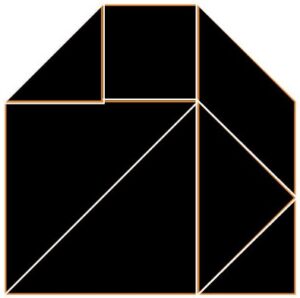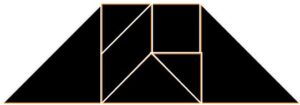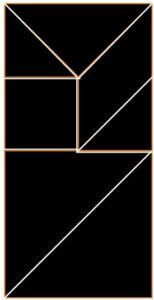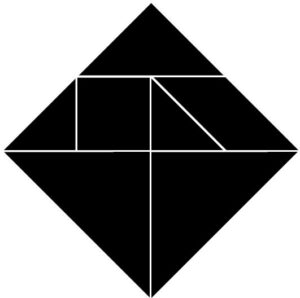Understanding Tangrams and Polygons
What’s a Tangram?
A tangram is an ancient Chinese puzzle made of seven flat geometric shapes, called “tans”: five triangles of different sizes, one square, and one parallelogram. Together, these pieces form a perfect square. Rearrange them, and you can create thousands of shapes that look like people, animals, or objects. Some tangram sets, like those forming an egg shape, use different pieces, but Tangram Fury sticks to the traditional seven-piece design.
What’s a Polygon?
A polygon is a flat, closed shape with three or more straight sides—no curves allowed! Think triangles, squares, or even an octagon like a stop sign. Circles and ovals don’t count because of their rounded edges. Polygons are classified as “simple” if their sides don’t cross (like a square) or “complex” if they do (like a star).
Are All Tangrams Polygons?
Yep, pretty much! Since tangram puzzles use seven flat-sided pieces (tans) that touch without overlapping, the shapes they form are polygons. Some are simple (like a basic house shape), while others are complex (like a person running). They might look like bunnies or boats, but they’re just polygon shapes suggesting those things.
What is a Convex Polygon?
Alright, let’s keep this fun and simple. A convex polygon is a rare type of shape where every side bulges outward, like a puffed-up beach ball (but with flat sides, since it’s a polygon). Imagine rowing across a lake: if you can paddle straight from any point on the shore to any other without hitting having to turn the canoe, then that lake is convex. If the shore caves in, it’s concave.
What’s a Concave Polygon?
Think of a concave polygon as a shape with a “dent” in it, like a caved-in wall. Unlike a convex polygon, which bulges out (imagine the puffed-up beach ball), a concave polygon has at least one angle that dips inward, making it look like it’s got a bite taken out of it. For example, picture the outline of a star or a crescent moon shape—those are concave because their edges cave in. Technically, one of its angles is over 180 degrees, but just think “dented shape” and you’re good!
OK, let’s try one last example to make sure this is clear. Picture a deflated beach ball. When it’s deflated, you can grab it because parts of it are tucked into itself, or there are dents in its surface, or however you want to describe that. Now, just picture the deflated beach ball’s shadow (because polygons aren’t 3-dimensional). Because of the dents in the edges of the shadow, the deflated beach ball’s shadow is concave. Fill that ball with air, and the shadow will be convex. (But, it won’t be a polygon, because it’s round….) Using this analogy, one could say that a convex polygon is a flat-sided shape that is essentially bursting at its seams.
What’s a Convex Tangram?
A convex tangram is an extremely-rare tangram shape that’s also a convex polygon—meaning it’s all puffed out with no dents. In 1942, mathematicians Fu Traing Wang and Chuan-Chin Hsiung proved mathematically that out of thousands of possible tangram shapes made with the seven tans, only 13 are convex polygons. That’s a tiny fraction! Tangram Fury includes all 13, some named “pyramid” or “tent,” but most labeled as “Convex Tangram.” Spotting these in the game is like finding a rare treasure while you race to win!
A Final Note on Convex Tangrams
Why Are Convex Tangrams Special?
In 1942, mathematicians Fu Traing Wang and Chuan-Chin Hsiung proved that only 13 convex tangram shapes (out of thousands possible) can be made with the seven tans. These rare shapes, included in Tangram Fury, have no dents and bulge outward, like a puffed-up polygon. But here’s the cool part: while there are only 13 unique silhouettes (that are scrolling above), some can be built in multiple ways!
Different Arrangements, Same Shape
Wang and Hsiung showed the 13 convex shapes, but didn’t lock in how the seven tans (five triangles, one square, one parallelogram) must be arranged. This means you can create the same silhouette with different piece placements—not just by flipping or mirroring the shape, but by rearranging the tans in entirely new ways. It’s like solving the same puzzle with a fresh twist each time!
How It Impacts Tangram Fury
In Tangram Fury, this variability adds an extra layer of fun and challenge. As you race to build a convex tangram (like a “pyramid” or “tent”), you might discover a unique arrangement that throws off your opponents or speeds up your win. It’s a brain-teasing bonus that keeps the game exciting and rewards creative thinking! This means that even if your solution doesn’t match the placement of the tans on the card, if the overall outline matches the outline on the card, it’s a win!

